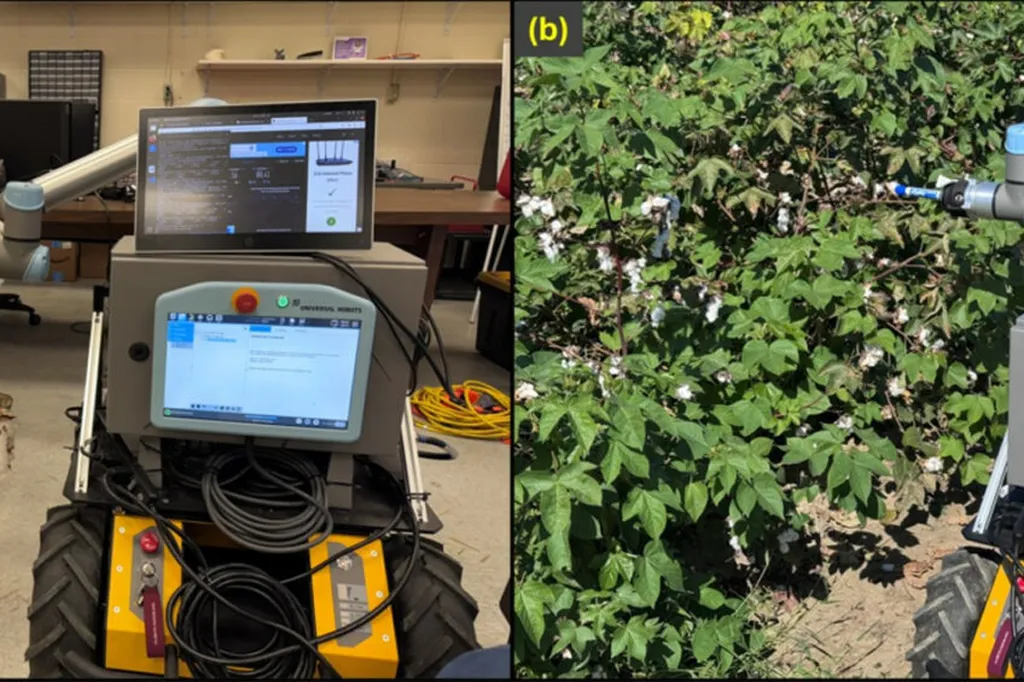In the heart of Georgia, a team of researchers led by Deus F. Kandamali at the University of Georgia’s College of Engineering is revolutionizing cotton farming with an innovative AI-driven assistant named CottonBot. This isn’t just another chatbot; it’s a sophisticated tool that combines retrieval-augmented generation (RAG) with agentic large language models (LLMs) to provide cotton farmers with real-time, context-aware, and farm-specific recommendations. The implications for the agricultural sector, and by extension the energy sector, are profound.
CottonBot is designed to support farmers with comprehensive guidelines on pest management, soil fertilization, weed control, nematode management, and most notably, real-time irrigation recommendations. Unlike traditional systems that rely on static knowledge bases, CottonBot integrates dynamic data from soil moisture sensors and local weather forecast APIs. This integration ensures that the recommendations are not only actionable but also tailored to the specific conditions of each farm.
“CottonBot leverages open-weight LLMs and runs locally through the Ollama framework, ensuring cost-efficiency, data privacy, and accessibility in resource-limited settings,” explains Kandamali. This local processing capability is a game-changer, as it allows farmers to make data-driven decisions without relying on expensive cloud-based solutions.
The experimental setup for CottonBot was meticulous. The team evaluated multiple embedding models using two retrieval backends: FAISS (Facebook AI similarity search) and Chroma (a vector database). The embedding model, all-MiniLM-L6-v2 paired with FAISS, achieved the highest retrieval performance, while Llama 3.1 produced the most faithful and semantically accurate responses. For real-time irrigation support, CottonBot’s agentic tool interprets weighted soil moisture data to provide crop-specific recommendations, demonstrating its utility beyond text retrieval.
The deployment of CottonBot as a cross-platform mobile application using FastAPI and Flutter for both iOS and Android makes it accessible to a wide range of farmers. The results indicate that CottonBot enhances decision-making support for cotton farmers, leading to more efficient water use and improved crop yields.
The commercial impacts of this research are significant. Efficient water use not only benefits farmers but also has a positive ripple effect on the energy sector. Reduced water consumption means lower energy requirements for pumping and treating water, leading to cost savings and a smaller carbon footprint. Moreover, improved crop yields can stabilize food prices and reduce the need for energy-intensive food imports.
This research, published in the journal ‘Smart Agricultural Technology’ (translated from Chinese as ‘智能农业技术’), sets a new standard for AI-driven agricultural tools. It demonstrates the potential of combining RAG with agentic LLMs to create dynamic, context-aware, and farm-specific recommendations. As Kandamali puts it, “CottonBot is not just a tool; it’s a paradigm shift in how we approach precision agriculture.”
The future developments in this field are promising. As AI technologies continue to evolve, we can expect even more sophisticated tools that integrate real-time data from various sources to provide comprehensive support to farmers. This will not only enhance agricultural productivity but also contribute to sustainable practices that benefit the environment and the energy sector.
In conclusion, CottonBot represents a significant step forward in the integration of AI and agriculture. Its success story is a testament to the power of innovative research and its potential to transform industries. As we look to the future, the lessons learned from CottonBot will undoubtedly shape the next generation of agricultural technologies.

